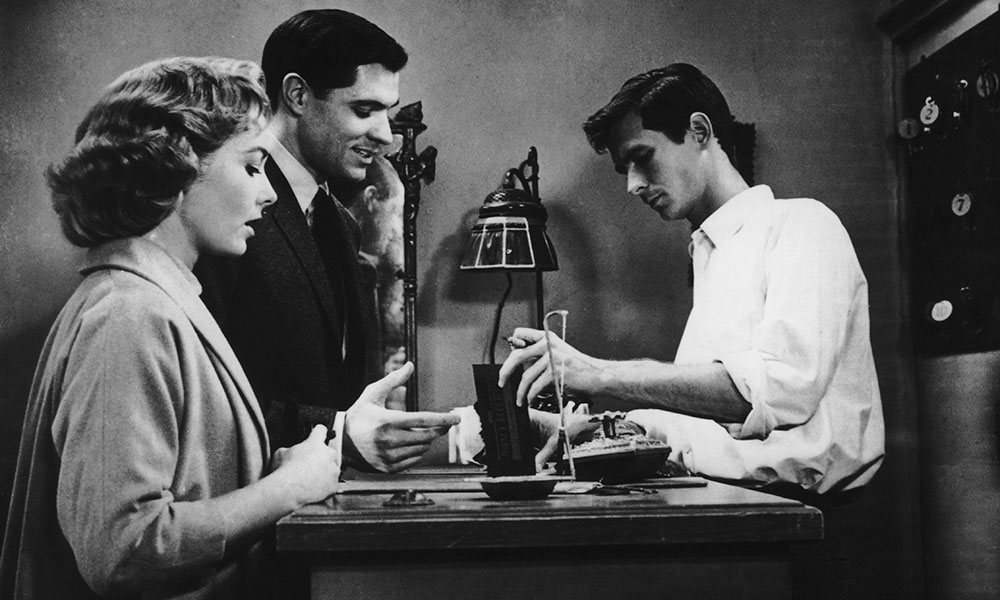Professor of English James Longenbach encourages the appreciation of poetry, and National Poetry Month was established 20 years ago to do the same: “to highlight the extraordinary legacy and ongoing achievement of American poets, and encourage the reading of poems.” We invite you to revisit this page and discover some of the poetic richness that can be found at the University of Rochester.
“My favorite poems”
Members of the Rochester community read their favorite poems. More videos will be added throughout the month of April.
“When Did It Happen?” by Regina A. Cerulli, read by Kate Cerulli, Associate Professor of Psychiatry and Director of the Susan B. Anthony Center for Women’s Leadership.
“A Magic Moment I Remember” by Alexander Segeyevich Pushkin, read by Tatyana Bakhmetyeva, lecturer in the Susan B. Anthony Institute for Gender, Sexuality, and Women’s Studies.
“First Fig”, by Edna St. Vincent Millay, read by Joan Saab, Associate Professor of Art History and Chair of the Department of Art and Art History.
“An Elegy for My Daughter,” by Muhammad Ibn al-Khiyami, as translated and read by Emil Homerin, Professor of Religion and Chair of the Department of Religion and Classics.
“Apricots,” by Professor of English Jennifer Grotz, as read by the author.
“The Argument of His Book,” by Robert Herrick, as read by Honey Meconi, Professor of Musicology, Chair and Professor of Music, College Music Department.
“You Who Never Arrived,” by Rainer Maria Rilke, as read by Nigel Maister, Russell and Ruth Peck Artistic Director of the International Theatre Program.
“De Profundis”, by Georg Trakl, translated by James Wright and Robert Bly, read by Stephen Schottenfeld, associate professor of English.
“Be Not Defeated by the Rain”, by Kenji Miyazawa, translated by David Sulz, read by Mari Tsuchiya, Senior Library Assistant, Outreach, Learning, and Research Services. Translation used with permission.
“Idea 61: Since there’s no help, come let us kiss and part”, by Michael Drayton, read by Honey Meconi, Professor of Musicology, Chair and Professor of Music, College Music Department.
Poetic treasures
A peek at a few choice pieces from the British literature collection held by Rare Books and Special Collections. (University photos / J. Adam Fenster)
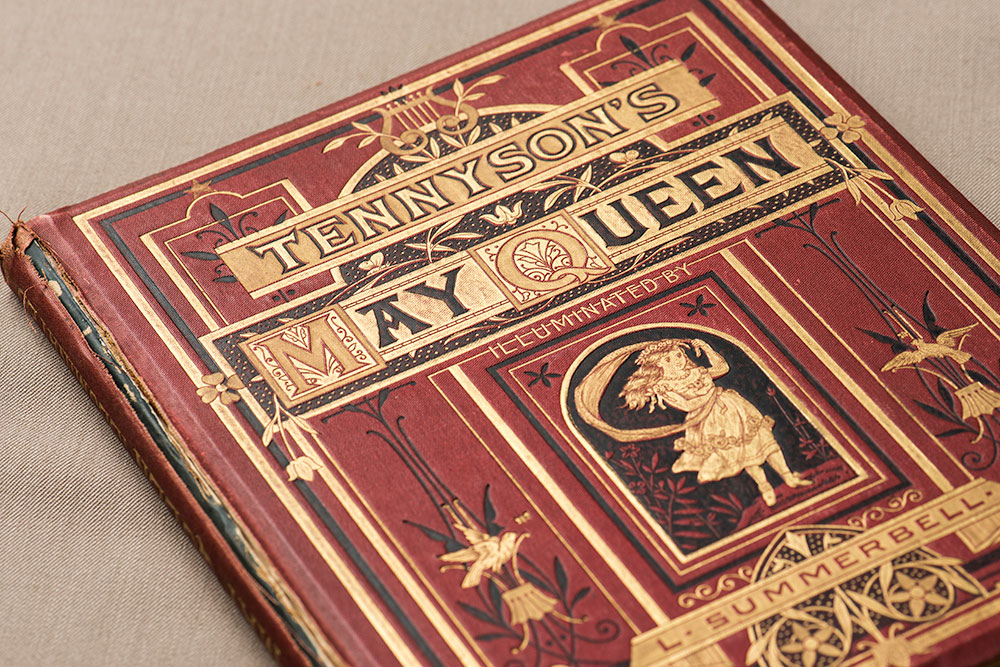
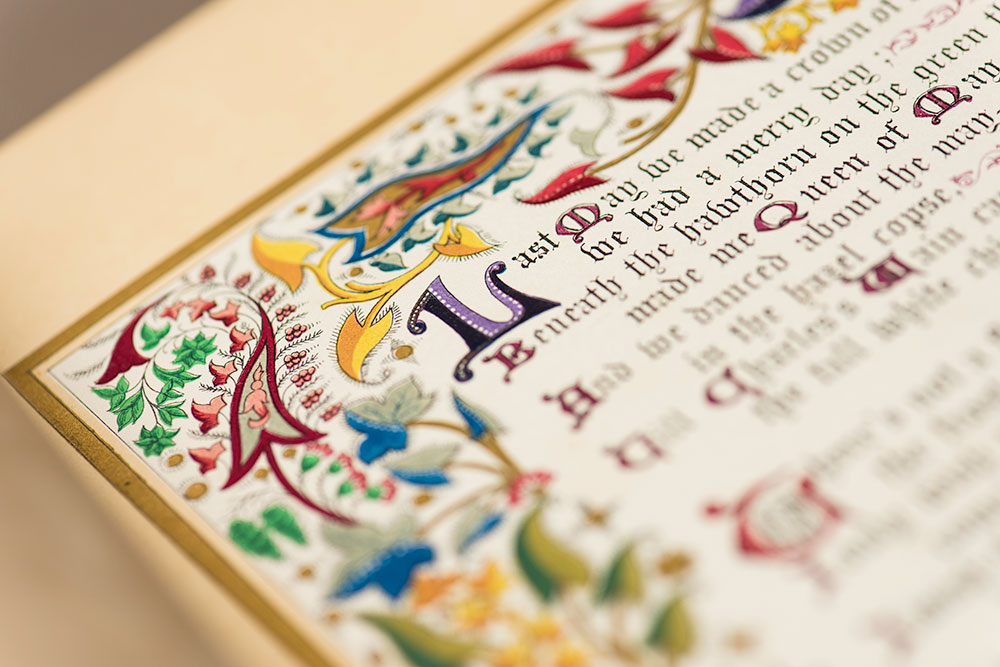
The May Queen
First published in 1832, Alfred Lord Tennyson’s poem “The May Queen” is brilliantly set off in this illuminated edition designed by L. Summerbell (London: Frederick Warne, 1870s). The enormously popular Victorian poet succeeded William Wordsworth as poet laureate of Great Britain and Ireland, and held the post for 42 years.
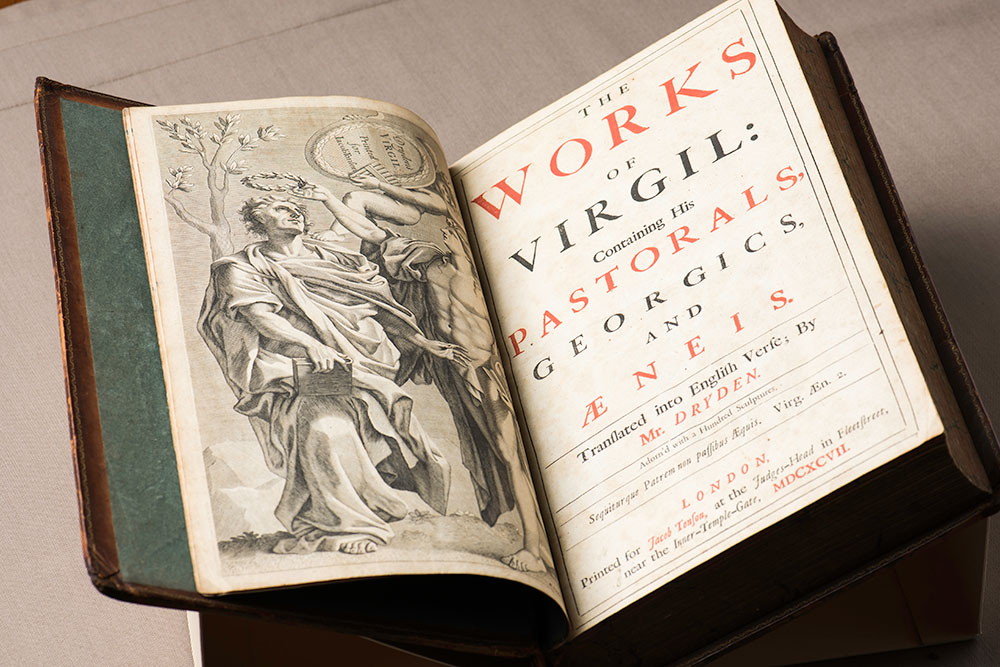
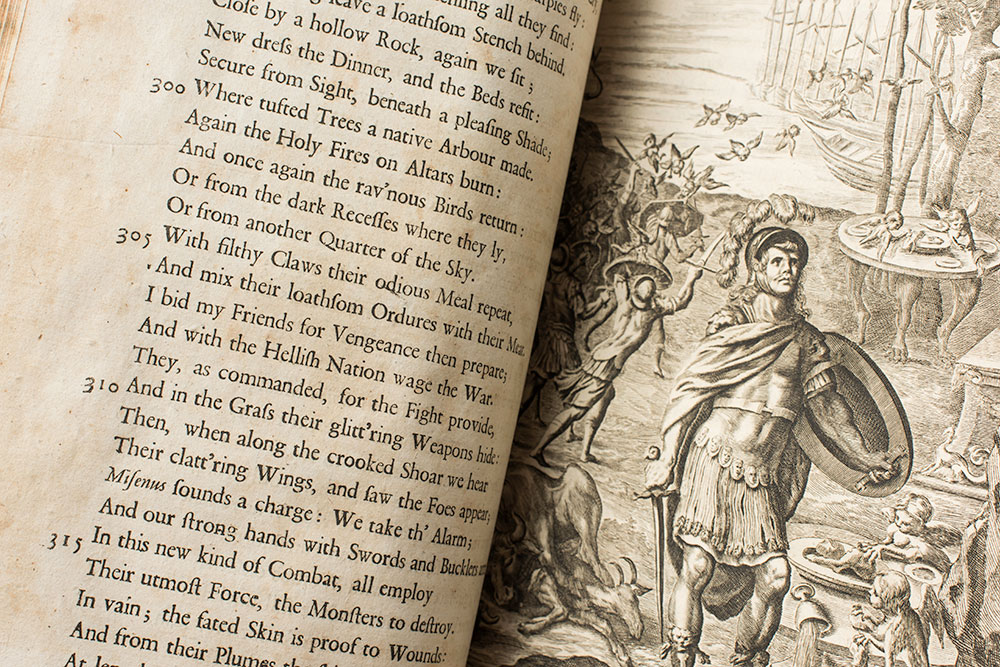
The Works of Virgil
The library holds about 200 first and early editions of works by 17th-century poet, playwright, critic, and translator John Dryden. Also the first official English poet laureate, he was so influential that his era is sometimes referred to as the “Age of Dryden.” This is a first edition of The Works of Virgil: Containing His Pastorals, Georgics, and Æneis. Translated into English Verse by Mr. Dryden, Adorn’d with a Hundred Sculptures (London: Jacob Tonson, 1697).
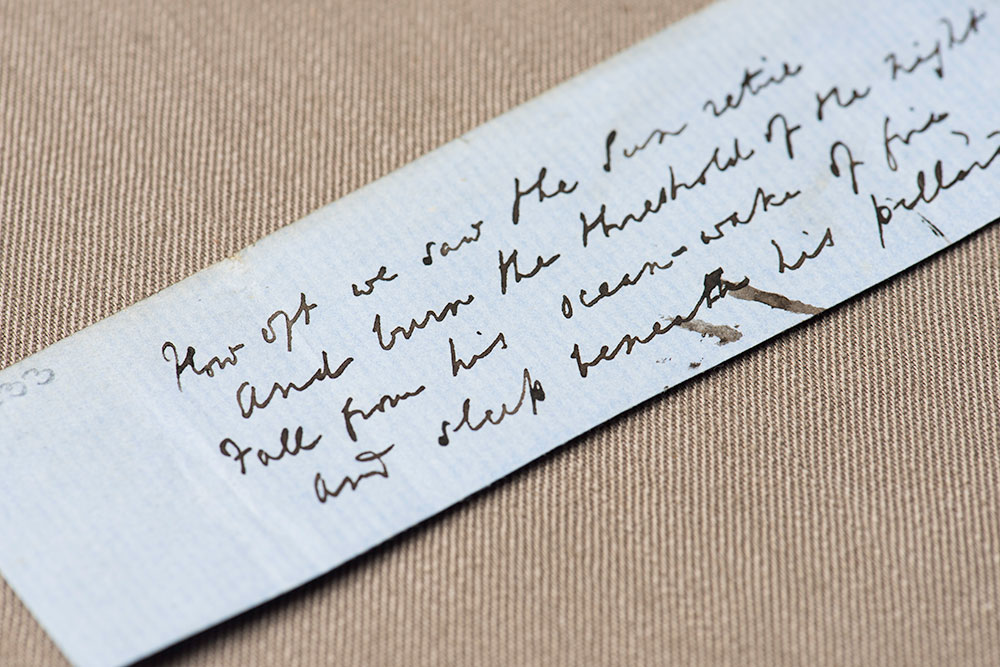
The Voyage
These lines from Tennyson’s poem “The Voyage” are written in his own hand and describe the view from the deck of a ship: “How oft we saw the Sun retire / And burn the threshold of the night / Fall from his ocean-wake of fire / And sleep beneath his pillar’d light!”
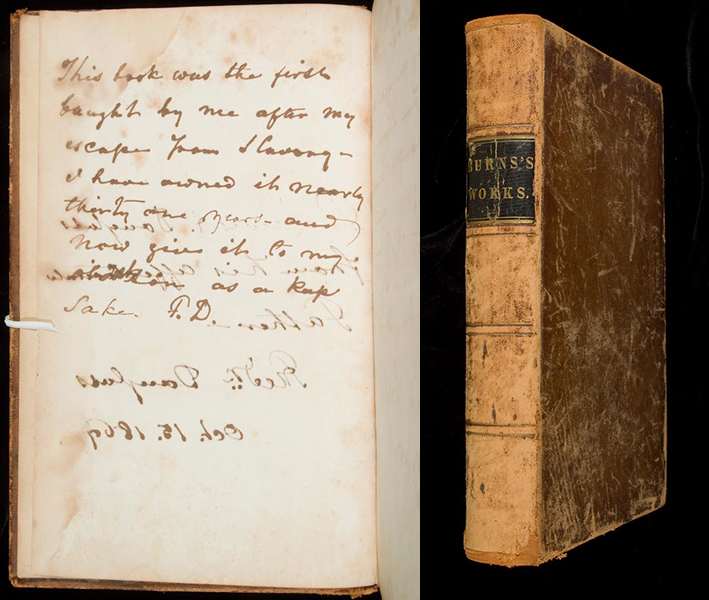
The Work of Robert Burns
In 1869 abolitionist Frederick Douglass presented this book to his son Lewis. Above you can see the inscription in Douglass’s handwriting: “This book was the first bought by me after my escape from slavery. I have owned it nearly thirty one years and now give it to my oldest son as a keep sake. F.D.”
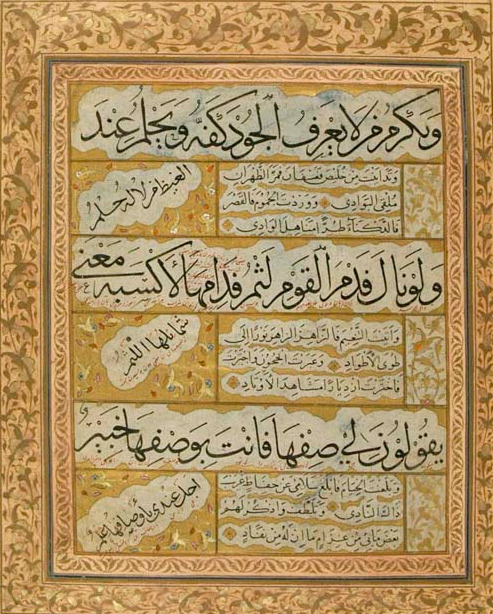
Wine Ode
The Memorial Art Gallery’s collection contains this stunning 17th century Persian manuscript in watercolor, ink, and gold. The large Arabic script and the Arabic in the “cloud” shapes are verses from the poet Umar Ibn al-Farid’s Wine Ode, the most famous mystical poem on wine in Arabic. Ibn al-Farid (1181-1235), who studied Islamic mysticism and Arabic literature in Cairo and Mecca, composed poems that generally embrace a view of existence in which creation is lovingly intimate with its divine creator.
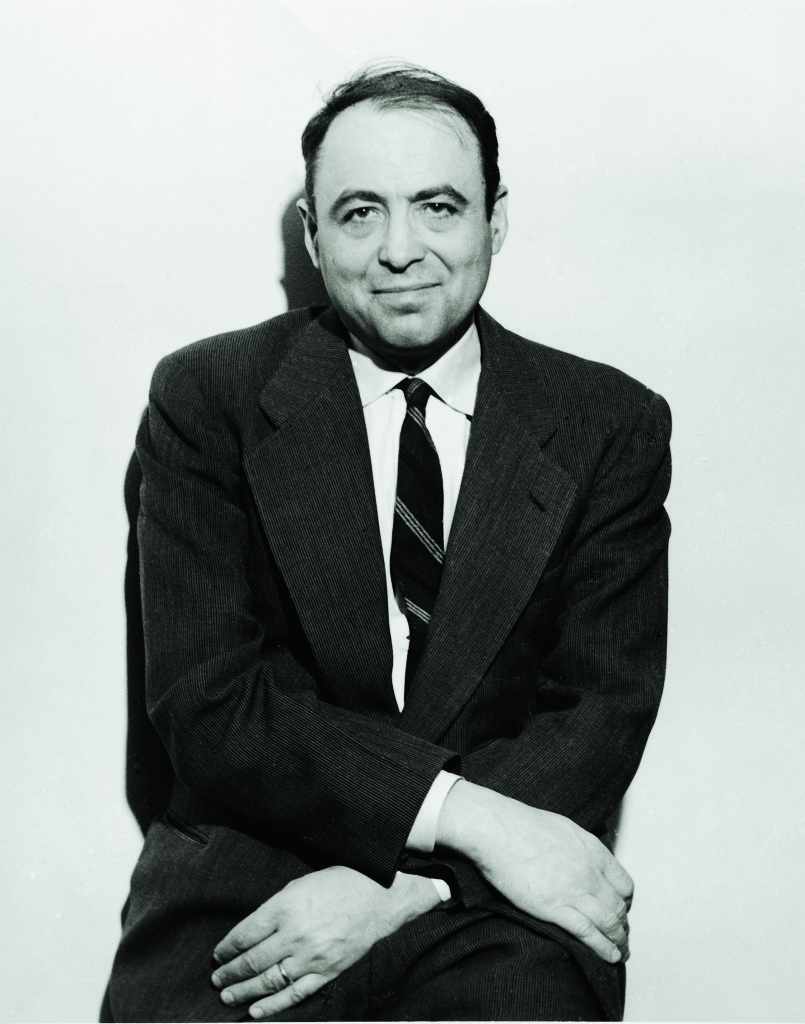
Thoughts on Hyam Plutzik, Letter from a Young Poet
by Edward Moran
Seventy-five years after it was written by a twenty-something college graduate—and long before that graduate became a Rochester professor—Hyam Plutzik’s eloquent Letter from a Young Poet still resonates with today’s millennials in their quest for life’s calling. Addressed to Odell Shepard, Plutzik’s mentor at Trinity College, the 72-page letter is a “song of the self and the soul,” in the words of poet Daniel Halpern, who wrote the Foreword to the book, published in 2015 by Trinity’s Watkinson Library.
With its title inspired by Rainer Maria Rilke’s acclaimed Letters to a Young Poet, Letter from a Young Poet can be read as Plutzik’s response to Rilke’s mentorial admonition to his young poet friend to “have patience with everything that remains unsolved in your heart . . . live in the question.”
Plutzik would continue to ask ever deeper questions for the rest of his life. Early in his career at the University, Plutzik committed himself wholeheartedly to following his poetic muse. In a 1950 article for the Poetry Society of Rochester, speaking on behalf of poets everywhere, he wrote: “We must stay alive, must write then, write as excellently as we can. And if out of our labors and agonies there appears, along with our more moderate triumphs, even one speck of the final distillate, the eternal stuff pure and radiant as a drop of uranium, we are justified.”
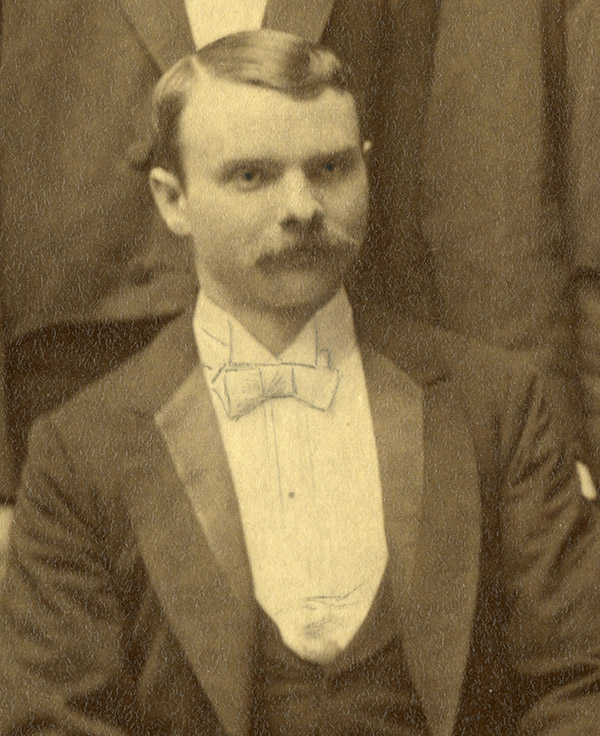
Thomas Thackeray Swinburne and “The Genesee”
Every student’s college experience begins and ends with these words—“Full many fair and famous streams…” Sung at Convocation and Commencement, and on many occasions in-between, these lines were written by Thomas Thackeray Swinburne, our University’s “Poet Laureate.” (The music was written by another alumnus, Herve Dwight Wilkins, a member of the class of 1866.)
Swinburne was born in Rochester, probably in 1862. A member of the class of 1892, he attended classes into his senior year but did not complete his degree. He was an associate editor of the student newspaper, contributed a poem to the 1894 yearbook, and not surprisingly, was chosen as Class Poet. An article in the Democrat and Chronicle after his death notes, “Although he had made no attempt to trace the ancestry, Swinburne believed himself to be a direct descendant of [the famed Victorian poet] Algernon Charles Swinburne.”
During the 1912 Rochester Centennial, Swinburne was named City Poet. As part of the celebratory proceedings he read a 30-stanza poem that includes a “conversation” between the river and the well-known Statue of Mercury, then atop the Kimball Building.
Swinburne published and printed books of his poems at his printing firm on Exchange Street. His 1907 Rochester Rhymes is dedicated to his sister Rose, whose death in 1926 would cause him to take his own life on December 17 of that year by jumping into the Genesee. It took another six months before his body was found and identified.
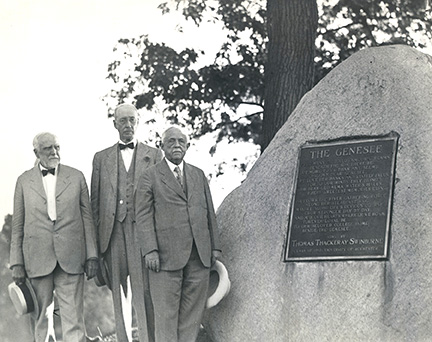
Swinburne’s will directed that his ashes be scattered in the Genesee, but as Professor of English John R. Slater wrote in the November 1951 issues of Rochester Review, “those who knew and loved him best did not obey him…they kept his ashes until the time was right…” Purportedly, a box with the ashes was buried four feet beneath the memorial boulder which stands near the Interfaith Chapel. But when the boulder was moved in 1968 and the area beneath it was searched, no box was found.
“The best poems ever written constitute our future.”
from Rochester Review, May 2013
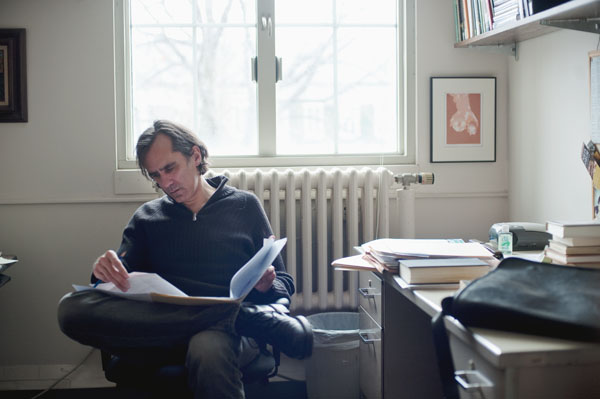
“The best poems ever written constitute our future,” writes James Longenbach, the Joseph Henry Gilmore Professor of English, in opening his book, The Virtues of Poetry (Graywolf Press, 2013). “They refine our notions of excellence by continuing to elude them.” In interlaced chapters, Longenbach considers the almost magical powers, or virtues, that poems can enact through the most ordinary means: among them, compression, dilation, intimacy, and otherness.
He leads readers, with attention to the smallest inflections of language, through works by such poets as Shakespeare, Yeats, Dickinson, Marvell, Whitman, Blake, and Ashbery, and finds within them examples of the endlessly diverse powers of language.
What prompted him to write the book? “A contradiction,” he says. “I found that when I was thinking about one particular poem, I would be talking about what made it interesting, worthy of attention, and so on; but then I’d be thinking about a different poem, and I’d realize that I would be talking about qualities that were inimical to the qualities that made the other poem interesting. This conflict seemed important and true to me: that you can’t legislate quality, or more perniciously, greatness—that the very quality that makes one poem fascinating and gripping and lasting might be the very thing that ruins another poem.”
Read more in Rochester Review.

Celebrating 40 years of BOA Editions
BOA Editions, a not-for-profit publisher of poetry and other literary works, marks 40 years of cultivating and publishing new and established poets.
River Campus Libraries recently acquired the press’ last decade of publishing archives.
EXHIBIT | BOA Editions: 40 Years of Connecting Writers with Readers
March 7 – July 29, 2016, Rush Rhees Library’s Friedlander Lobby
This retrospective will explore BOA’s evolution over the years through an extensive display of BOA volumes published between 1977 and 2015. Selected typescripts, book and cover designs, correspondence between authors and editors, and BOA publicity samples—all drawn from the archives of BOA Editions acquired by the River Campus Libraries beginning in 2005–will reveal the lifecycle through which poetry and literature move from submission to published work.

 Receive a daily unpublished poem from poets.org
Receive a daily unpublished poem from poets.org

